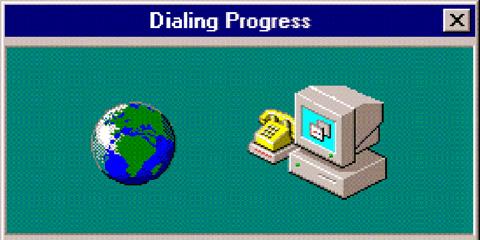Since the time it was founded the world wide web has touched the lives of a lot of people around the world and changed the way in which we connect with others as well as the nature of our work. Through the internet we are able to discover share and the nature of our work. The internet basically has become an integral part of the modern society. The internet as we know it today wasn’t always like that. The internet has evolved from simple computer networks to global interconnectivity networks and instantaneous wireless communication. The rapid and dramatic evolution of the internet has helped us understand the changing nature of technology and communications.
1960’s
The internet never existed even after the invention of the computer until much later in the 1960s. in 1962, computer scientist at MIT came up with the idea of a global computer network. He shared his idea with his colleagues at the us department of research and technology. They are the pioneers of the first ARPANET which is the present world wide web. It was the first real network that run on packet switching technology. Computers at UCLA and Stanford were the first to be connected to the internet. They were the first host on what came to be the internet. The first message that was ever sent through the network was Login however it crushed at the letter G.

Another major milestone is the that was experienced during the 1960s, was the inception of Unix. It was an operating system whose design heavily influenced that of Linux and Free USB. (The operating system that is very popular in today’s web servers.
1970’s
Arpanet was fully developed and operation in 1970 and it was established through the corporation of Harvard, MIT and BBN which is the company that created the first interface message processor. The computers used to connect to the network in 1970.
Ray Tomlinson developed the email in 1971 and is responsible for the decision to use the @ symbol to separate the user name from the computer name. it later came to be known as the domain.

One of the most impressive developments back in 1971 was the initiation of project Gutenberg. For those who are not familiar with the site, it refers to a global effort that is aimed at making books and documents electronically available for free in a variety of eBook and electronic formats. It started with Michael Hart gaining access to a large block of computing time and came to the realization that the future of computers wasn’t in computing itself but rather in storage, retrieval and searching of information that at that time was only available in libraries. He manually typed the Declaration of Independence and made the information available electronically and this was the birth of eBooks.
France started its own system very similar to Arpanet known as the CYCLADE. It was shut down eventually however it did pioneer a key idea. The host data should be responsible for data transmission rather than the network itself.
Arpanet made its first transatlantic connection in 1973 with the university college of London. During the same year the number of emails accounted for 75% of all Arpanet network Activity.
1974 was the breakthrough of the internet transfer protocol. There was a proposal which was aimed at linking Arpa-like networks together into what is inter-network and it would have a central control and would work around a transmission control protocol. It eventually came to be known as TCP/IP.
With the ever-increasing popularity of emailing, the first modern email program in 1975 by John Vittal who was a programmer at the University of Southern California. The biggest advancement in the technology was the addition of the reply and forward feature.
1977 was a very big year during the development of the internet. It is the year that the first PC modems that were developed by Dennis Hayes and Dale Heatherington were introduced and initially sold to computer hobbyists.
The first bulletin board system was developed back in 1978 during a blizzard in Chicago. It is also the year that the first unsolicited commercial email messages were sent to 600 California Arpanet users by Gary Thuerk.
The beginning of the world of warcraft and second life started back in 1979 with the development of multi user dungeon. They were entirely text based virtual worlds that combined the elements of role-playing games, fiction and online chat.
It was ushered into the scene back in 1979 by two graduate students. Usenet was an internet-based discussion system that allowed people from around the world to converse about the same topics by posting public messages categorized by news groups.
1980’s
The European Organization for Nuclear Research launched ENQUIRE which is a hypertext program that allowed scientist at the particle physics lab to keep track of people, software and projects using hypertext.

Arpanet computers switched to TCP/IP which was developed by Vinton Cerf and it affected a few hundred computers. This marked the birth of the name server which was developed in 1973. The domain name system was also developed in the 1980s and it was important in that it made the addresses on the internet more human friendly. By the year 1987 there were nearly 30,000 hosts on the internet. The original Arpanet protocol had been limited to around 100 hosts however the adoption of the TCP/IP made large number hosts very possible.
1990’s

The first commercial dial-up Internet provider came to existence and it is the same year that Arpanet ceased to exist. The codes for the world wide web was written along with the standards for html, HTTP and URL’s. The first web page was created during this year and it explained what the world wide web was. It was during the 1990s that the first MP3, webcams, content-based search protocol, first graphical web browser and the first governments to join in on the fun of the internet. It was the same decade that the first new story was broken on the internet rather than traditional media and the birth of Google.…
